Oplev Denmark – 1000 års historie i Esrum Kloster, Esrum Møllegård, Esrum Sø og Gribskov i Nordsjælland.
Text and photos Erik K Abrahamsen.
12. may 2016

In the Middle Age 1000-1400 A.C. all North Sealand is dominated of big forests, where the inhabitants lived by hunting, fishing and cultivating agricultural areas, where the forest had been cleared.
The population in all Denmark was about 700.000 inhabitants. Magnate men with castles and big properties ruled Denmark: Jutland, Funen, Sealand and Skaane, Halland and Blekinge together with a selected king and clergy of the Catholic Church.
In 1103 Lund in Skaane was established by danish king and the Pope in Rome as independent archbishopric to Denmark.
1151-53 Esrum Monastery was builded as a Cistercienser Monastery under Clairveaux Monastery in France.
Munks from France and Germany introduced new technology to Denmark and all Scandinavia:
water mills using waterpower from lakes and rivers,
bricks and tiles to build houses, castles and palaces,
tools for cultivating farm land and agricultural products.
Map of Gribskov, Esrum Sø, Esrum Møllegård and Esrum Kloster:
Click on photos and use your zoom control and you see them in full screen size and you ca read text.
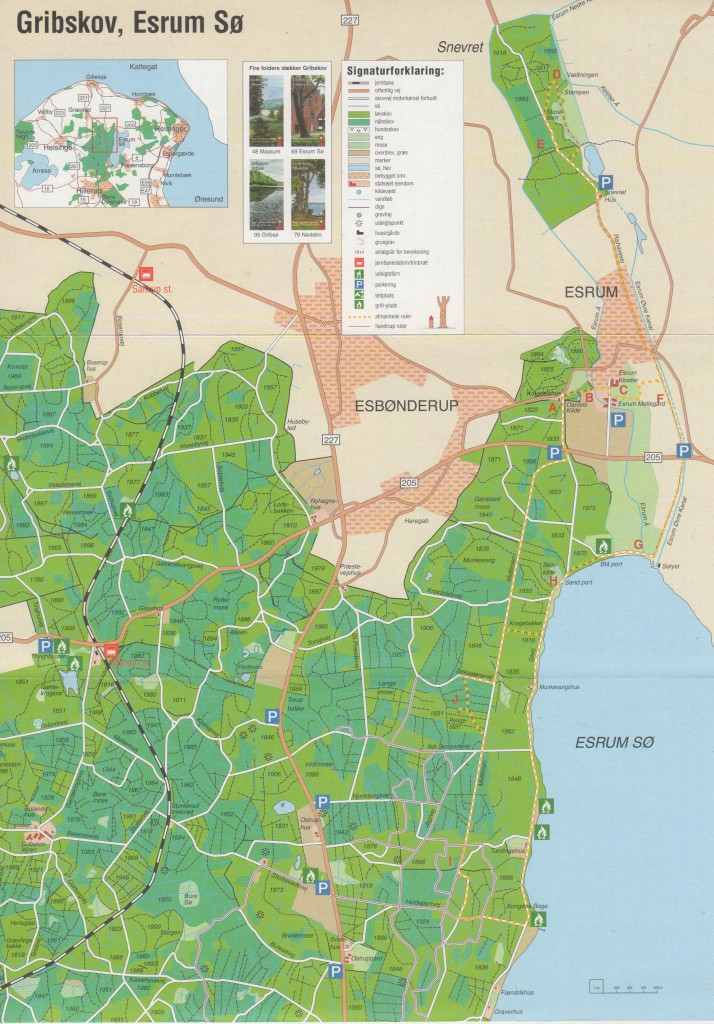
Esrum River runs about 15 km north from Esrum Lake to Kattegat Sea. Esrum Lake is Denmark third biggest lake, 8 km long, 2 km wide and 10-20 meter deep. The water is clean with all kind of fish.
Esrum Lake is situated 9 meter above sea level.
The cistercienser monks builded Esrum Monastery close to Esrum River and to use the water power from the river they builded a Water Mill for flour production.
Esrum Møllegård – Esrum Watermill and farm:
Click on photos and use your zoom control and you see them in full screen size and you ca read text.
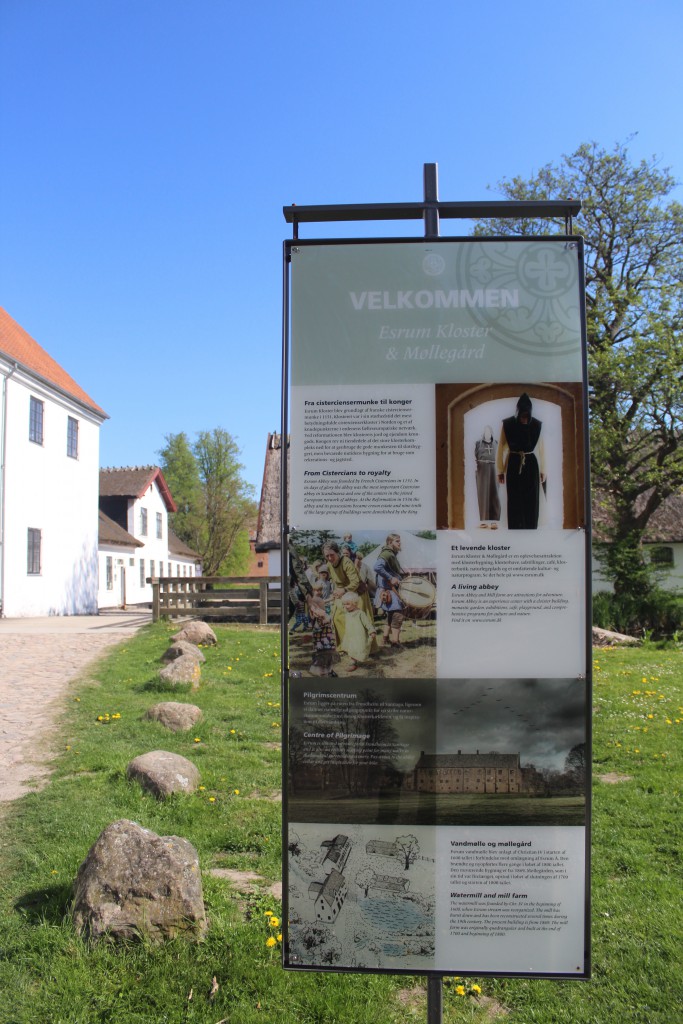
Esrum Møllegård – Esrum Watermill and farm:
The Watermill is builded 1605 by King Christian 4 (King of Denmark and Norway 1588-1648).
Click on photos and use your zoom control and you see them in full screen size.

Esrum Watermill – Esrum Møllegård:
At right water from Esrum Lake runs into the mill and generate waterpower to mill wheel.
View to Milldam.
Click on photos and use your zoom control and you see them in full screen size.

Inside Esrum Watermill – Esrum Møllegård:
Back right the water runs into the mill to mill wheel under the floor with a waterfall of about 3-4 meter. At left the water runs out of the mill house to a stream west of the mill.
Millwork in ground floor.

Esrum Møllegård – Esrum Watermill and farm:
Millwork in ground floor.
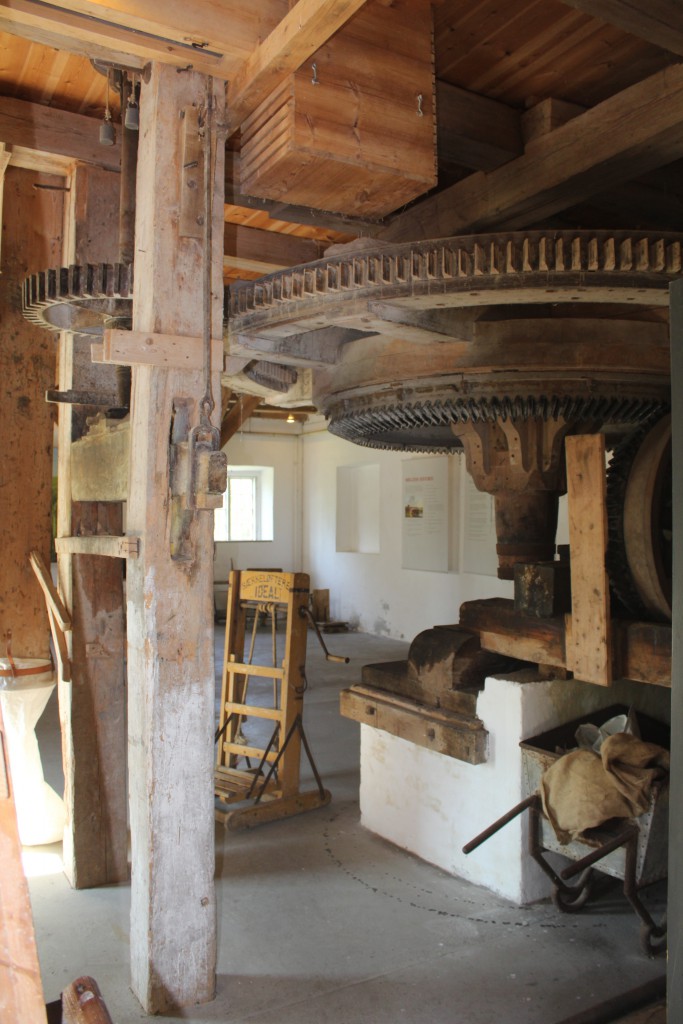
View from ground floor of Esrum Mill to mill stream running in direction west from the mill:

Plate of history of Esrum Møllegård:
Click on photos and use your zoom control and you see them in full screen size. and you can read text.

Plate of millwork, Esrum Møllegård:
Click on photos and use your zoom control and you see them in full screen size.

Millwork on first floor of Esrum Møllegård:

Millwork on first floor of Esrum Møllegård:
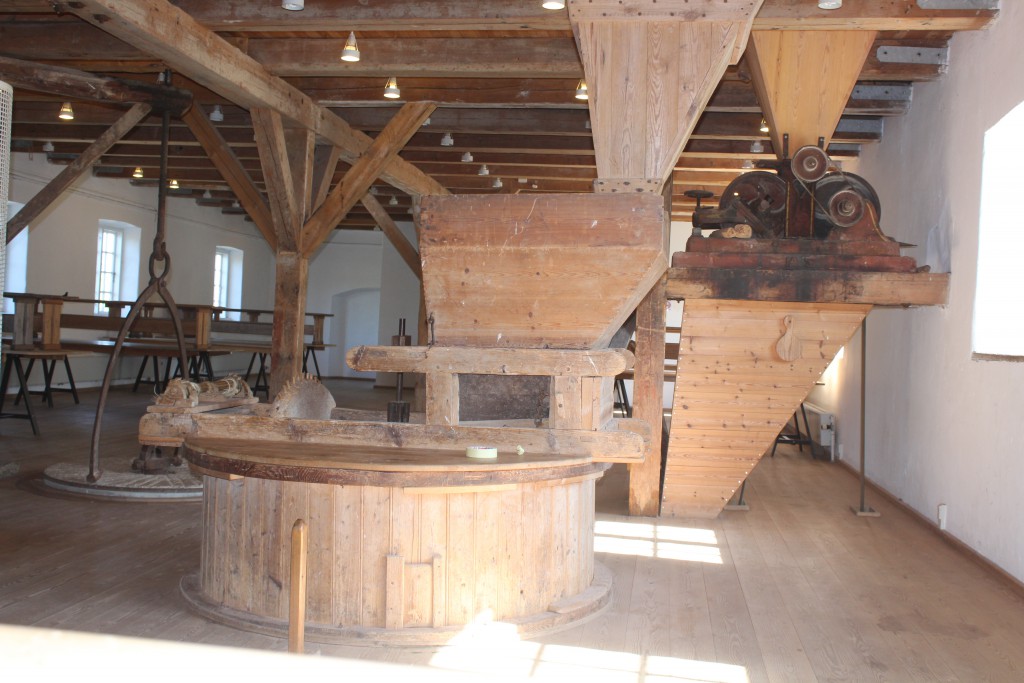
Esrum Møllegård – millpond:

Esrum Møllegård – millpond:
View in direction north to Esrum Monastery.
Click on photos and use your zoom control and you see them in full screen size.

Esrum Møllegård – Esrum Mill and Farm:
Esrum Møllegaard is a Center for Nature and Environment with exhibitions, environmental education and nature experiences, Ecological cafe and shop.
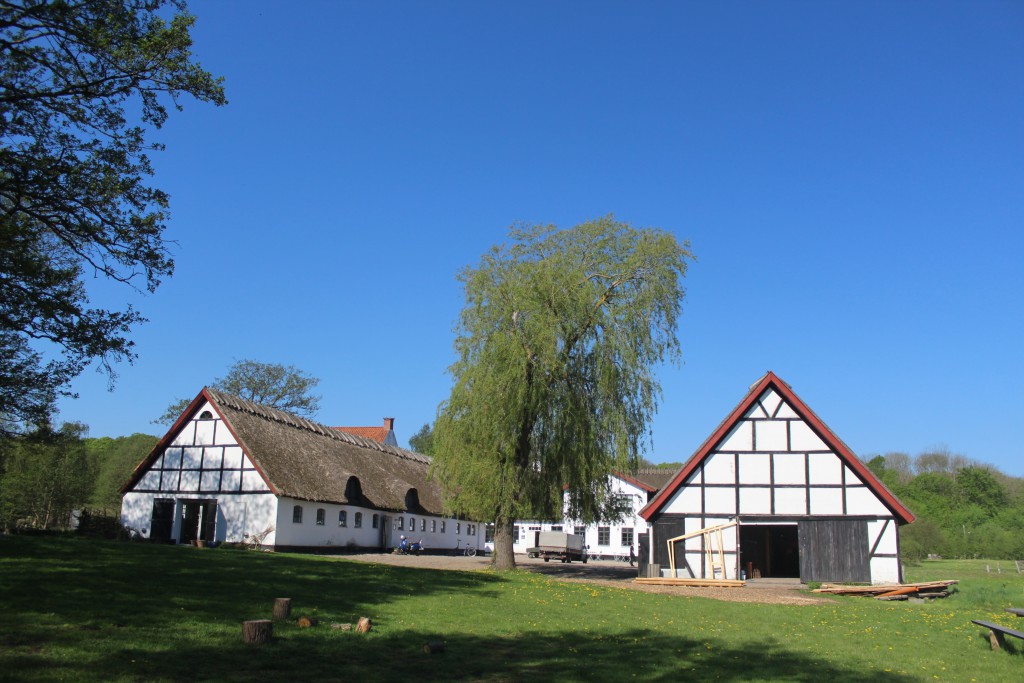
Esrum Møllegård – Esrum Mill and Farm:
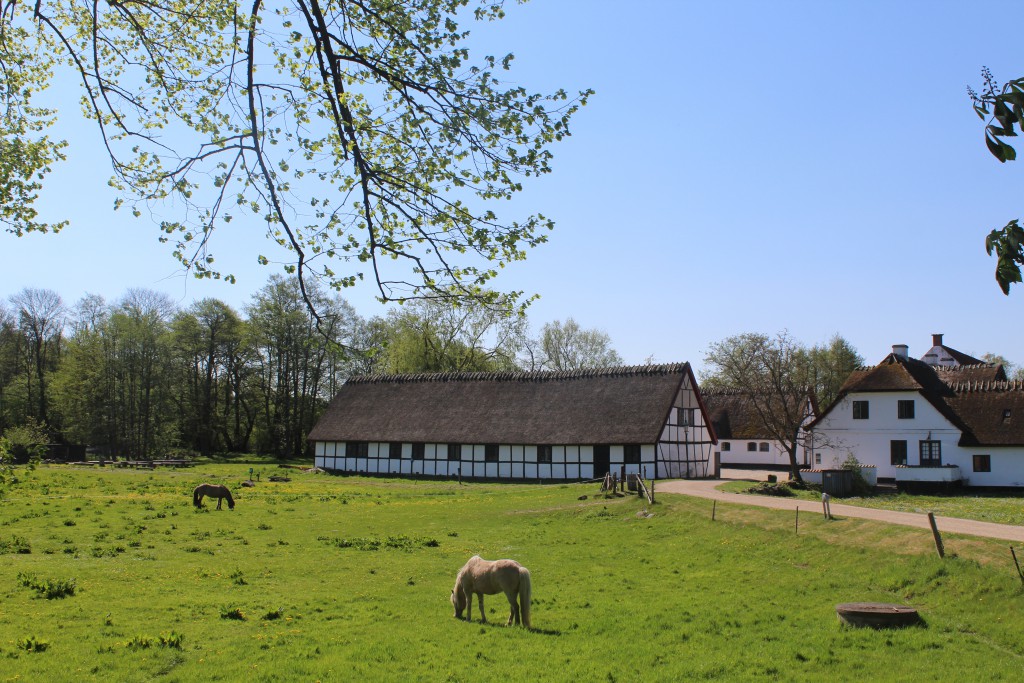
Esrum Monastery:
South wing of original “Økonomigård” builded 13-1450 A.C.
Esrum Monastery and Moellegaard is located 500 m north of Esrum lake and at the shore of Esrum River. The cisterciensermonk-monastery Esrum Monastery was founded 1151 as daugter-monastery of Clairvaux, France.
The monks from France brought knowledge, the newest technical inventions and education to Denmark. They revolutionized house construction, agriculture, forestry and use of waterenergy from rivers and lakes. They used herbes in medicine and established hospitals and social care to the poor.
The monks worked and teached through the centuries until The danish Lutheran Reformation in 1536.
In 1559 the monastery is closed and is belongs to the Danish Monarchy under Kronborg Castle in Helsingoer. From now on its a stud farm and the kings place for hunting.
In 1660 started the demolition of The Monastery and the bricks was used for building of Kronborg Castle and Frederiksborg Castle in Hillerød. One third of all North Zealand had until the Reformation in 1536 been in Esrum Monastery´ s possession.
In 1536 the king Christian 3 after a year of civil war in Denmark annected all the property of Esrum Kloster and the period “Kongernes Nordsjaelland” (“The kings Northsealand”) begun with building of exstraordinary beautifull castles and parks all over Northsealand by king Frederik 2 and king Christian 4 for residence, parties and hunting: Frederiksborg Castle, Elsinore Castle, Hoersholm Castle and Fredensborg Castle and a lot of hunting houses. All this area will in the future be part of the Nationalpark Kongernes Nordsjaelland ( National Park The Kings North Zealand).
Before the demolition Esrum Monastery was the biggest building in Scandinavia.
To day you can see what is saved, its mayby 1/10 of the original size. But still a big beautiful building which belongs to the east wing with the original rooms for eating and auditorium for the monks.
South wing of original “Økonomigård” builded 13-1450 A.C.
Click on photos and use your zoom control and you see them in full screen size.
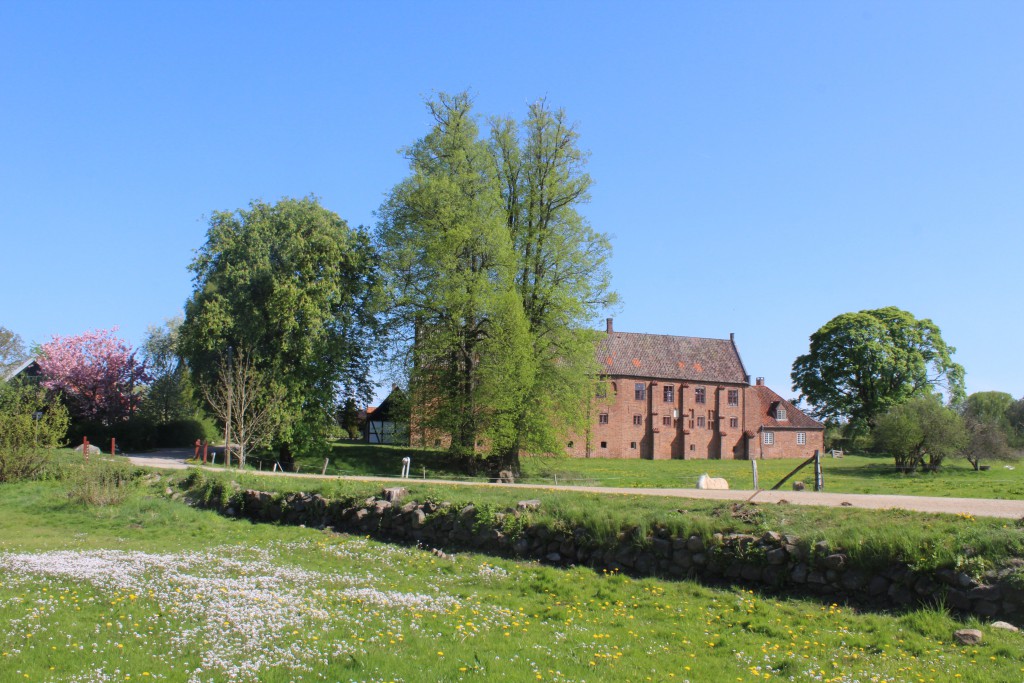
Model of Esrum Monastery:
3 group of buildings:
North: The Church,
West: Fratergård- buildings for monks,
East: Økonomigård – buildings for daily living, diner, stores of needs, food and kitchen.
Click on photos and use your zoom control and you see them in full screen size.
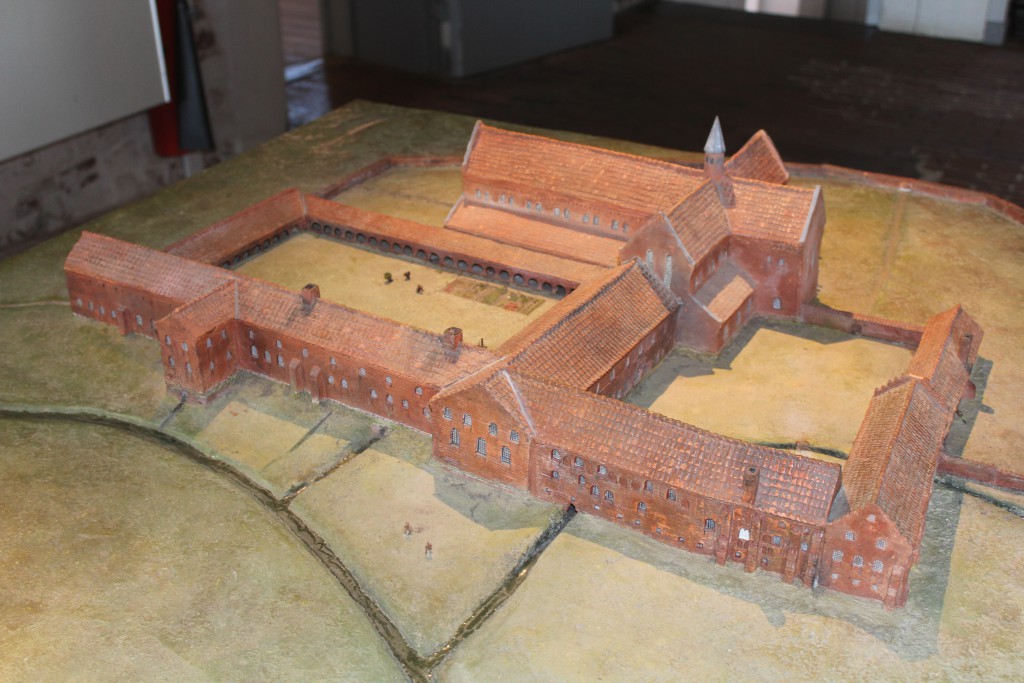
Esrum Monastery:
South wing of original “Økonomigård” builded 13-1450 A.C.
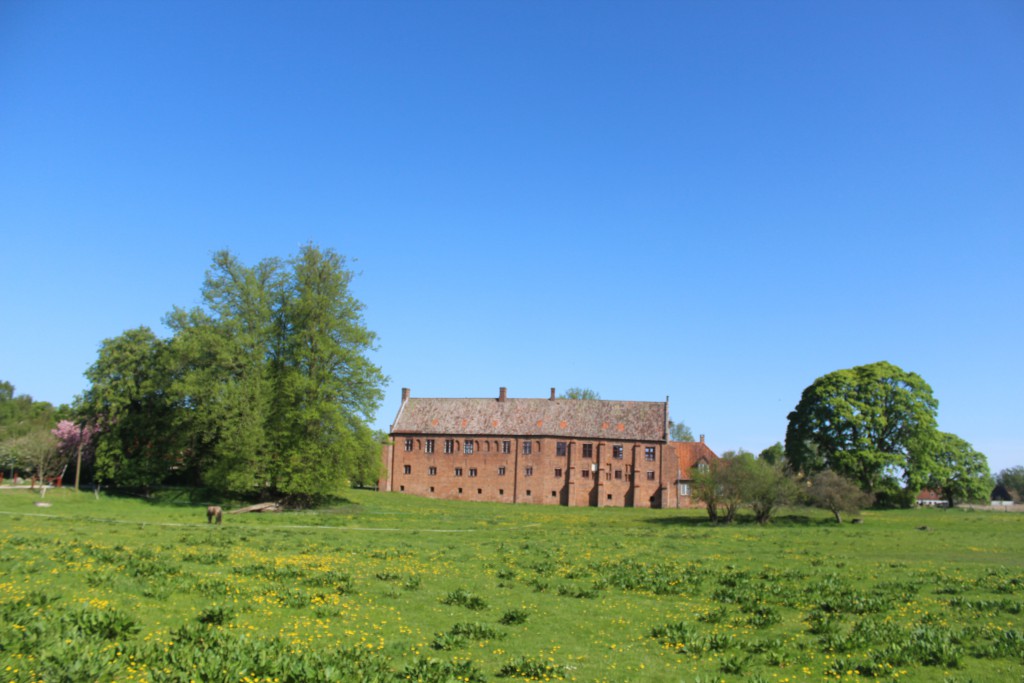
Abbey garden- Klosterhaven with herbals for food and medicine:

Entrance to Esrum Monastery with “Økonimigård” builded 1300-1450 A.C.:
Click on photos and use your zoom control and you see them in full screen size.

Entrance to Esrum Monastery – The “Økonomigård” builded 1300-1450 for daily living: dining hall, kitchen, pantry, stock of wines etc.:
In front : a “kagsten” for punishment after legal proceedings.
Click on photos and use your zoom control and you see them in full screen size.

Indoor in “Økonomigård” builded 1300-1450 – today museum, exhibition halls, restaurant and lecture room:

Indoor in “Økonomigård” – eastern part builded 1450 : The cellar room (Dining room for monks?) – today restaurant:
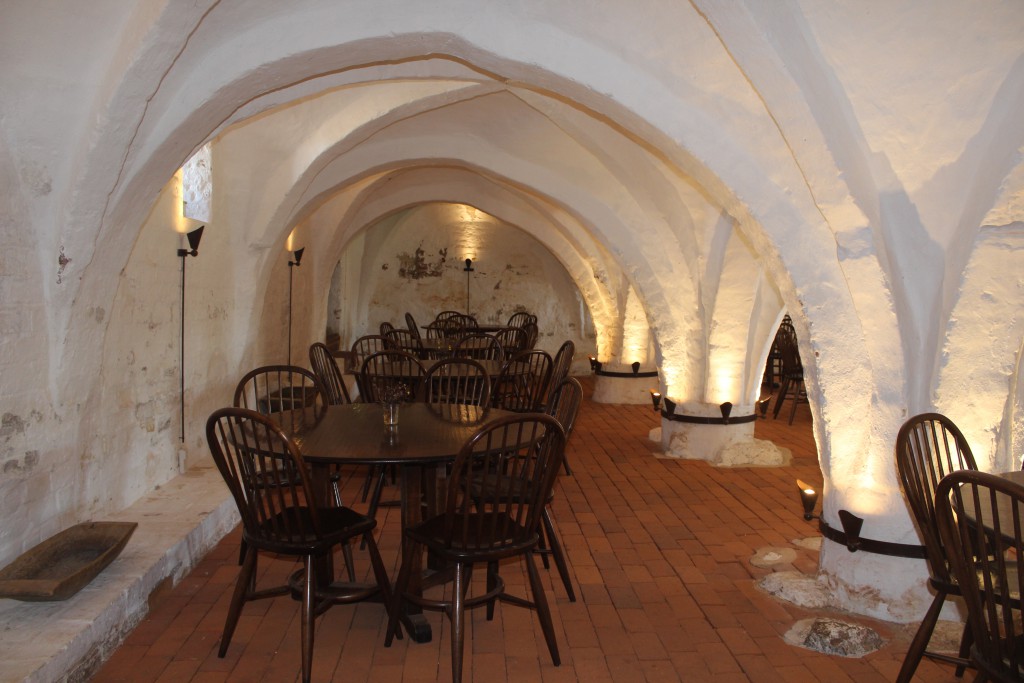
Alterpiece, Museum of Esrum Monastery:
Click on photos and use your zoom control and you see them in full screen size.
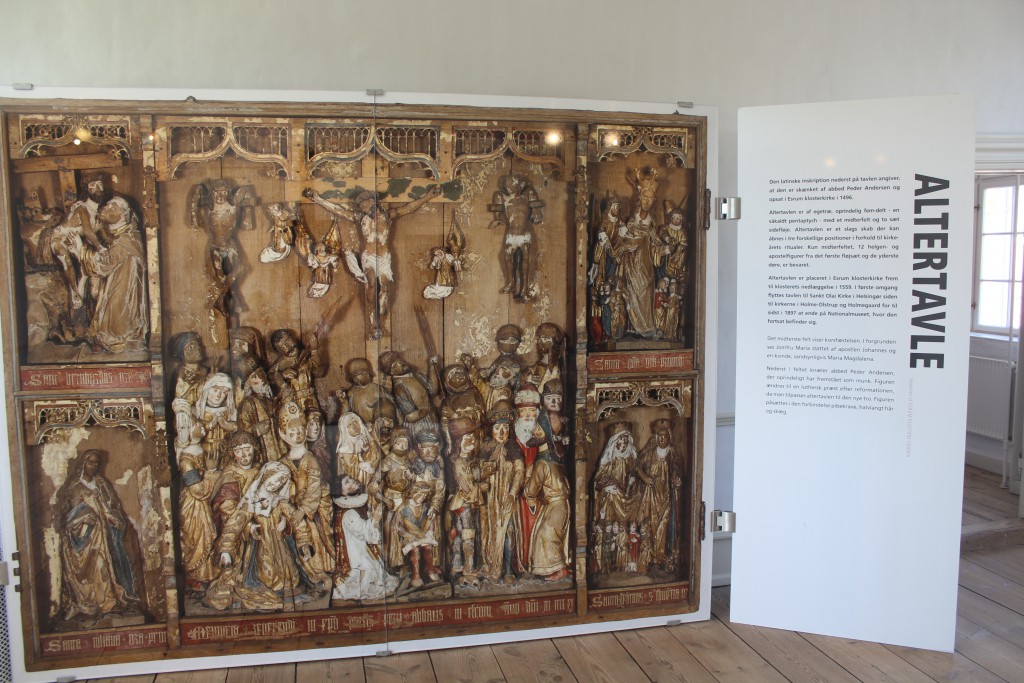
Pilgrims from Esrum- and Sorø Monasteries to all Europe:
The queen´s pilgrims – conditions to monks of Esrum- and Sorø Monasteries by Queen Margrethe 1 of Denmark and Norway in 1411:
Click on photos and use your zoom control and you see them in full screen size.
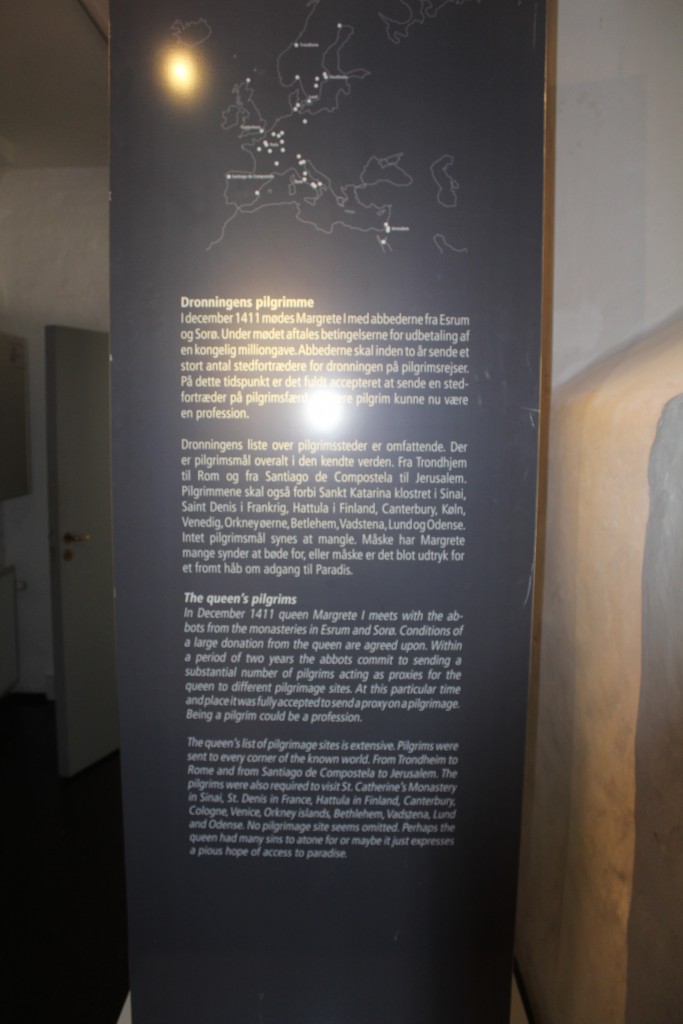
Pilgrims from Esrum- and Sorø Monasteries to all Europe:

The Pilgrim from Esrum – Peder Keller:
Click on photos and use your zoom control and you see them in full screen size.

West of “Økonomigård” has this well been excavated:
Fratergård, Korsgang and well.
Click on photos and use your zoom control and you see them in full screen size.

Model of Esrum Monastery and its 3 buildings:
The Church at north, “Fratergård” with a well at west and “Økonomigård” at east:
Click on photos and use your zoom control and you see them in full screen size.
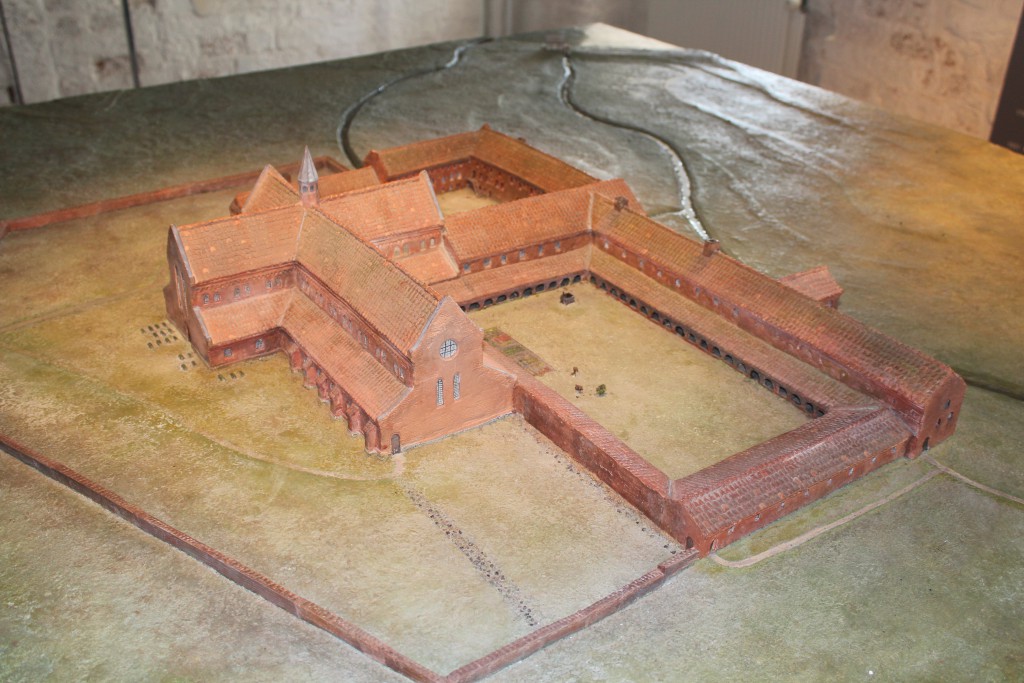
Esrum Monastry and its “Økonomigård” builded late 1300 (western part) and 1450 (eastern part) seen in direction east:

Esrum Monastery and Esrum Mill and Farm are located only 1 km north of Esrum Lake in North Sealand, Denmark:
Esrum Lake seen from bureal mound Harehøj:
Click on photos and use your zoom control and you see them in full screen size.

You can reach Esrum Monastry by train/bike from Copenhagen to Hillerød, then change to local train to MAARUM station in Gribskov.
The distance rom Maarum station to Esrum Monastery is 4 km on main road nr. 205 in direction to Elsinore (Helsingør).
Map of North Sealand, Denmark:
Click on photos and use your zoom control and you see them in full screen size.

From main road nr. 205 there is only 500 meter to Esrum Mastery and Møllegård:
Opposite the 500 m small road from main road nr. 205 to the Monastery you can walk on a small path 500 m to Esrum Lake:
Click on photos and use your zoom control and you see them in full screen size.

View to Esrum Lake:

Esrum River:

Path from main road nr. 205 to north shore of Esrum Lake in forest Gribskov:
Click on photos and use your zoom control and you see them in full screen size.

Esrum River Bridge and former bargee House at north shore of Esrum Lake:
Click on photos and use your zoom control and you see them in full screen size.
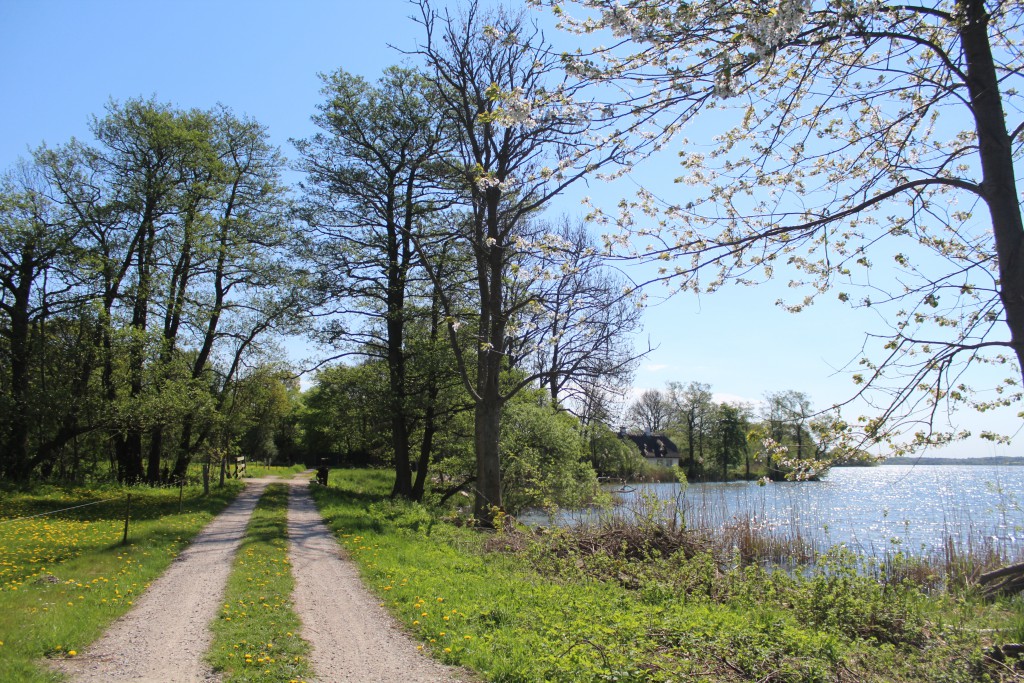
Esrum River Bridge at Esrum Lake.
Water regulation installation to regulate the water flow from Esrum Lake to Esrum river:
Click on photos and use your zoom control and you see them in full screen size.
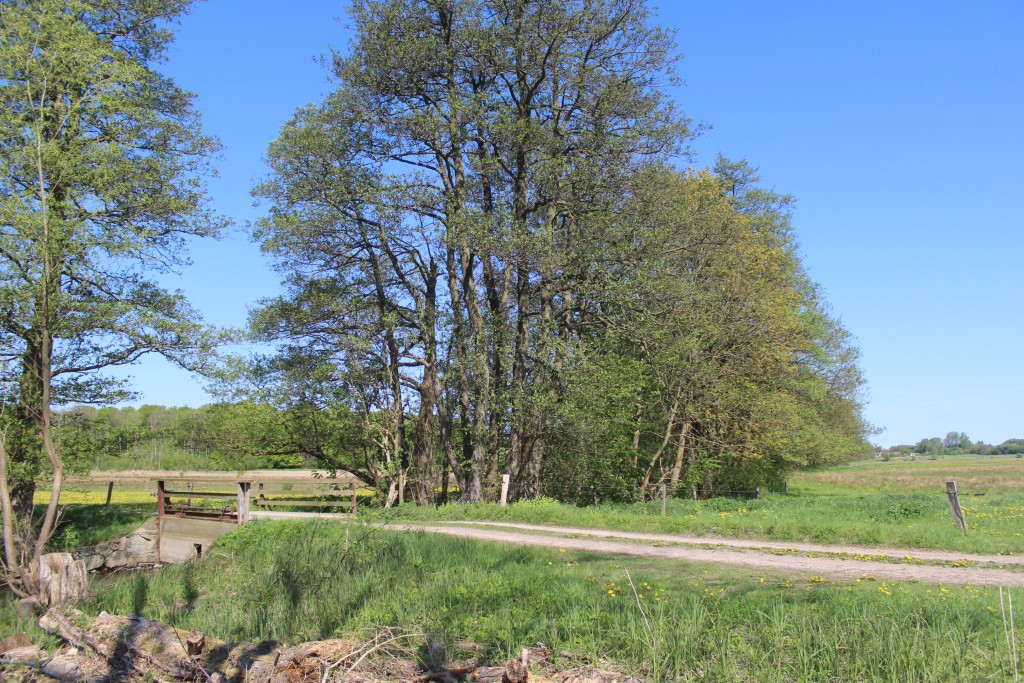
Esrum River Bridge at outflow of water from Esrum Lake med a water flow installation:
Esrum River flows 10-15 km north through Esrum Moellegaard and Esrum Monastery with 9 meter fall to Dronningmølle at Kattegat Sea:
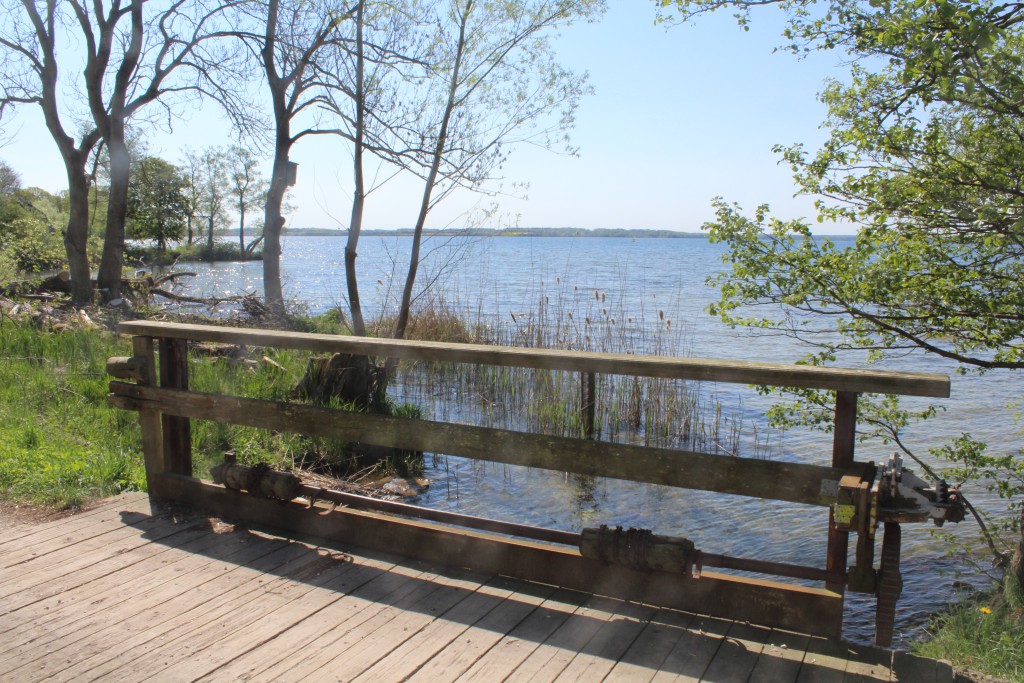
Forest Gribskov west and north of Esrum Lake:
View from “Blue Port” at Søvej.
Click on photos and use your zoom control and you see them in full screen size.
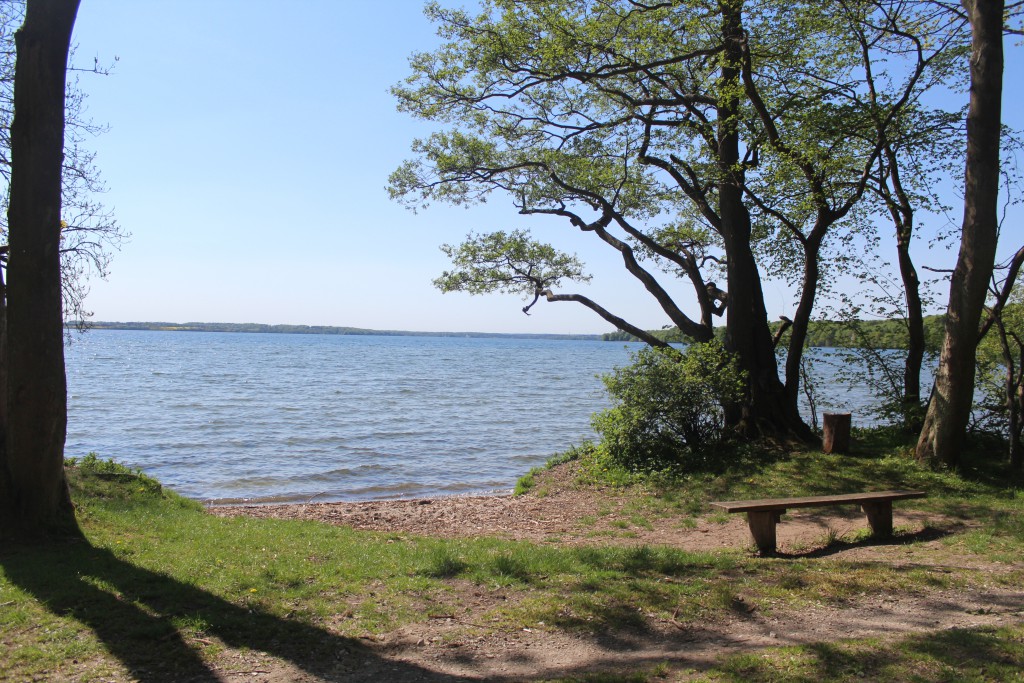
Søvej in north part of Gribskov forest:
2 danish national trees : oak and beech.
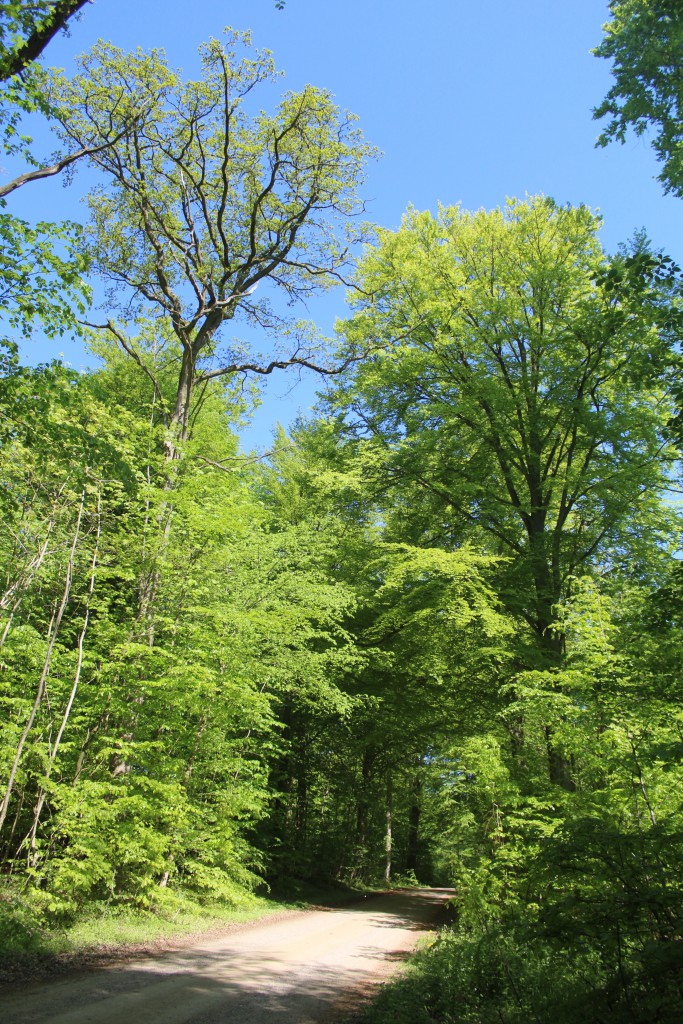
Map of part of Gribskov Forest and Esrum Lake on the parking area at main road nr. 205:
Click on photos and use your zoom control and you see them in full screen size and you can read text.

Map of Gribskov Forest and Esrum Lake:
Click on photos and use your zoom control and you see them in full screen size and you can read text.

Text and photos Copyright Erik K Abrahamsen 2016
All rights reserved
Enjoy life – be happy!
Melby, North Sealand, Denmark the 15. may 2016
Best wishes
Erik